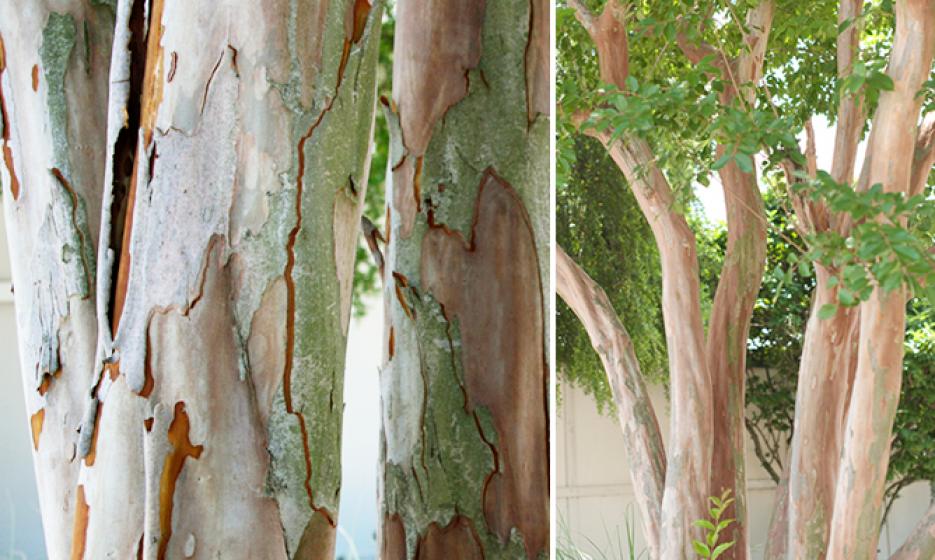The Beautiful Bark of the Crepe Myrtle
There are endless reasons that the Crepe Myrtle is the locals' favorite tree ~ it's blooms of 100 days, it's ability to thrive in heat & humidity, it's year-round beauty; and, it's magical peeling bark. You may begin to worry once your Crepe Myrtle's bark begins to peel. When you discover the bark shedding, you may think it is diseased and be tempted to treat it with pesticides. But, hold back. That peeling bark is normal; in fact, it's one of the most prized qualities of our favorite tree!
As all Crepe Myrtles grow and mature, they shed last year's bark, revealing a colorful, mottled bark beneath. Once the tree has reached full maturity, several years after planting... you are in for a real show. Sit back and enjoy the unique texture and coloration that shows up on their wood once the bark is shed. Because the Crepe Myrtle is a deciduous tree, it sheds all its leaves during the winter, leaving behind the beautiful bark on the tree which makes it a centerpiece in many winter landscapes.
Now that you know peeling bark is a normal process, observe the surprises your Crepe Myrtle provides each season. During the summer, enjoy 100 days of gorgeous crepe-like flowers. Once the flowers fade in the fall, watch as their leaves turn, enhancing your fall landscape with bright yellow and deep red leaves. Once the leaves fall off and the bark is shedding from your tree, you will then have beautiful colored wood providing structure and style. The peeling bark will first leave behind warm colors ranging from cream to beige to cinnamon and on to bright red. When the colors fade, they are more like light green-gray to a dark red.
Join us as we celebrate this tree at our 32nd annual CREPE MYRTLE FEST, JULY 19 & 20. >>

